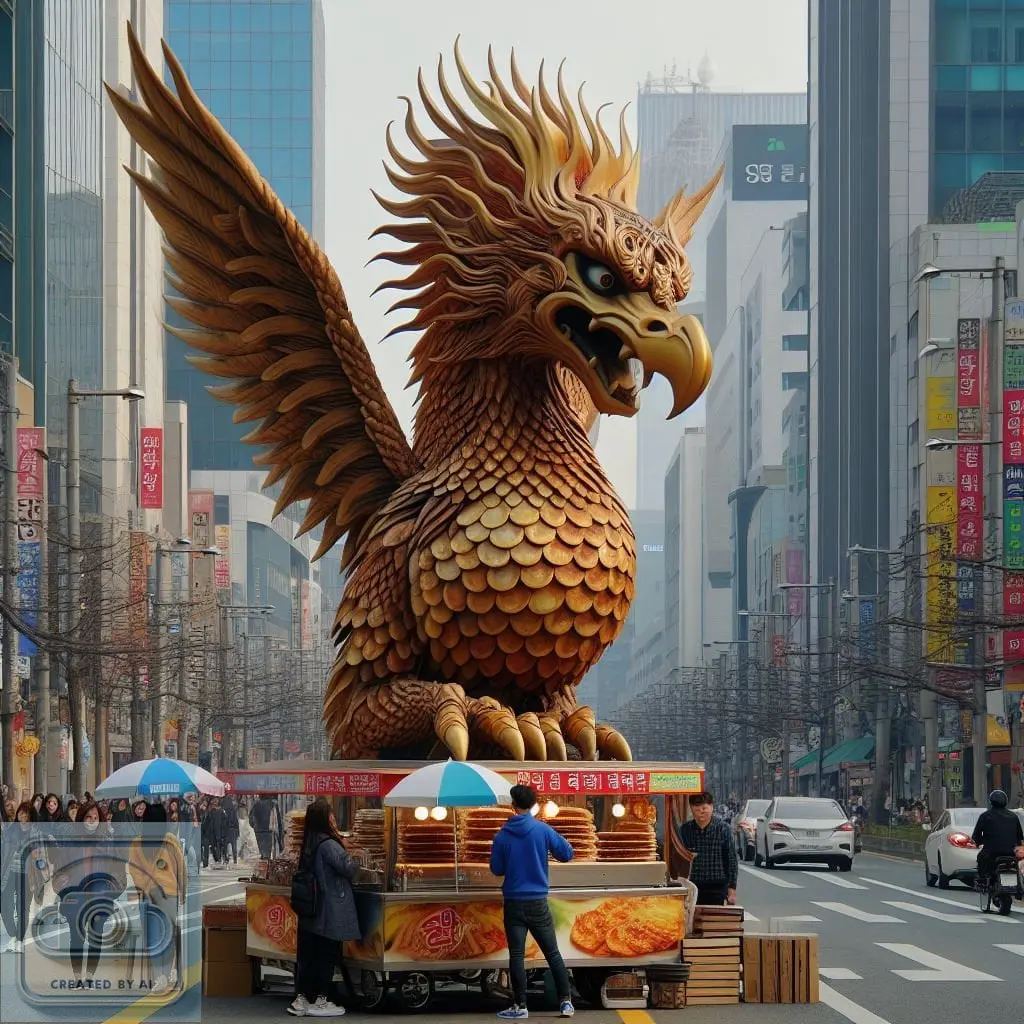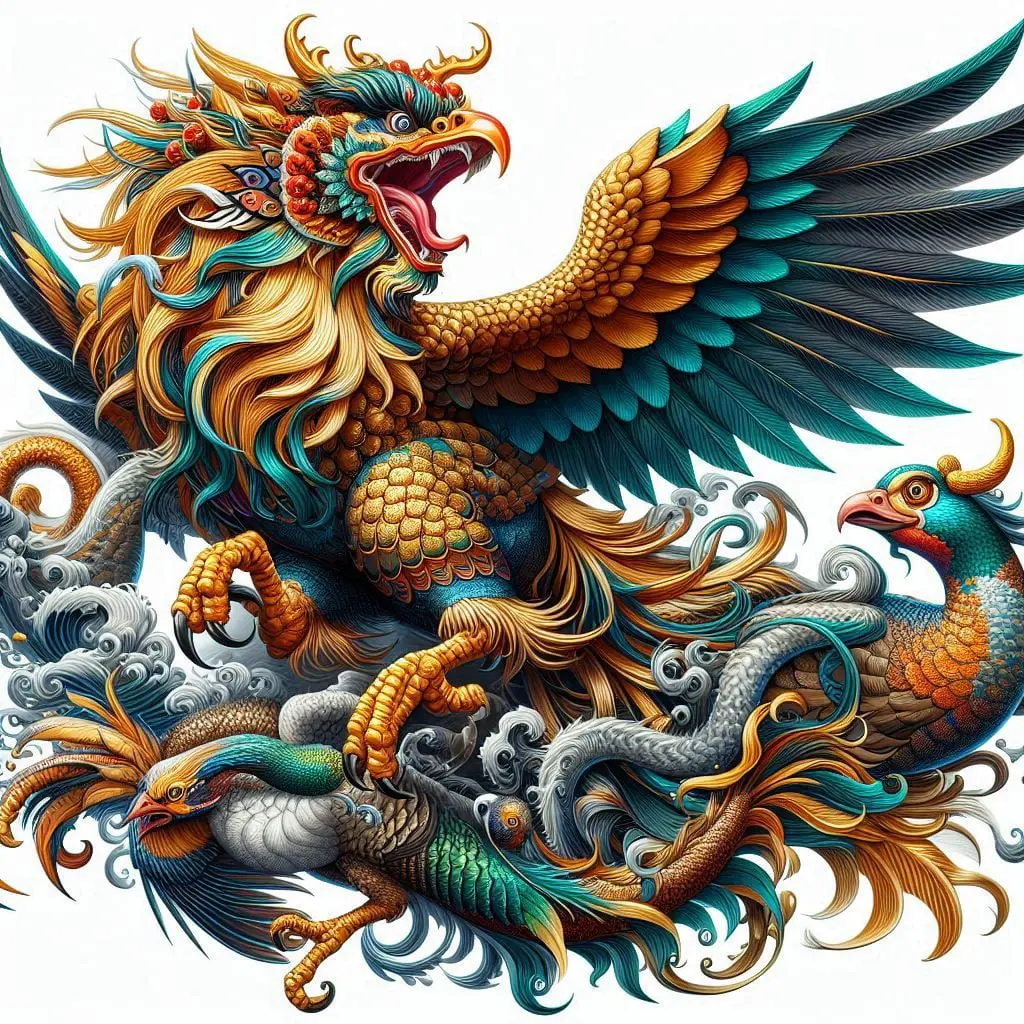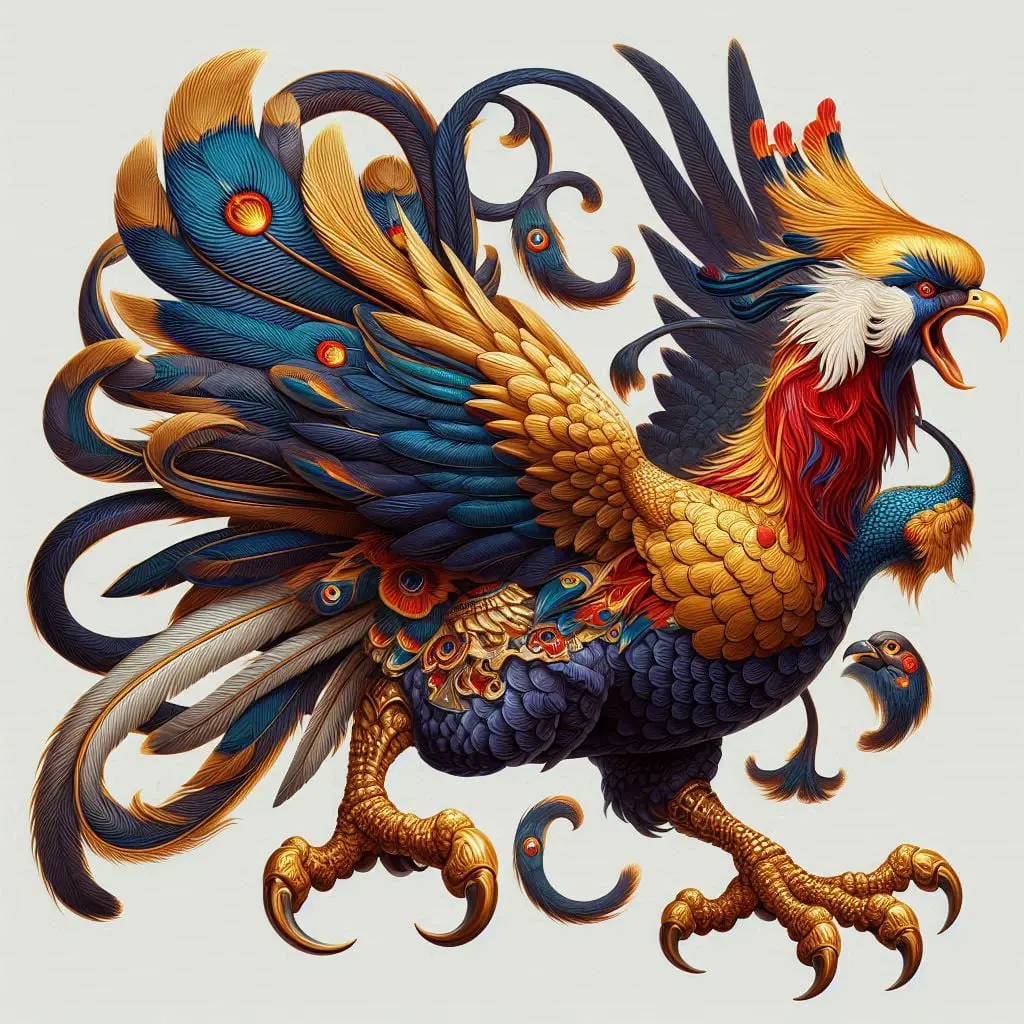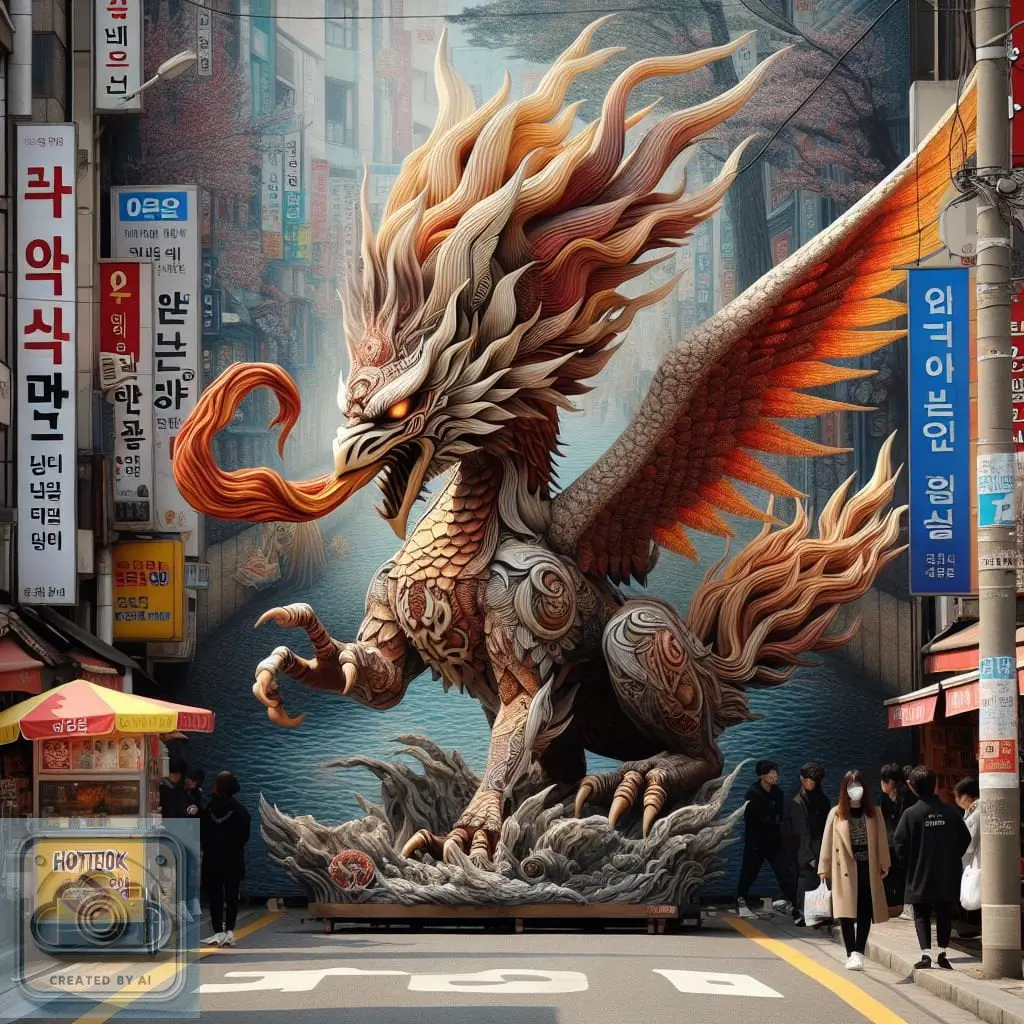
Bongwhang, A Radiant Symbol of Balance and Immortality
Bongwhang, also known as the Korean phoenix, is a mythical creature that has been an iconic symbol in Korean culture for centuries.
With its striking resemblance to a peacock, the bongwhang is revered as a symbol of balance, harmony, and prosperity.
Its depiction in various forms of art, literature, and architecture reflects the deep-rooted significance of the bongwhang in Korean society.
Historically, the Bonghwang was depicted attacking snakes with its talons and with wings spread. Its appearance has evolved over time, but it still shares similarities with the phoenix.
Appearance
According to ancient descriptions, the Bonghwang was a fierce creature that was made of different parts of a variety of animals, including a rooster's beak, a swallow's face, a fowl's forehead, a snake's,neck, chest from a goose, a tortoise shell for a back, a stag's rear quarter, and a fish's tail.
According to more recent interpretations, it is a composite of various birds, including the head of a golden pheasant, the body of a mandarin duck, the tail of a peacock, the legs of a crane, the mouth of a parrot, and the wings of a swallow.
Symbolism
Symbolizing peace and harmony, the Bonghwang embodies the union of opposing forces, such as the sun and the moon or yin and yang. It is revered as a symbol of compassion, mercy, and good fortune.
Symbolically, its body represents celestial elements:
The head represents the sky.
The eyes represent the sun.
The back represents the moon.
The wings represent the wind.
The feet represent the earth.
The tail represents the planets.
According to legend, the Bonghwang was created by the sun itself, and its body is composed of five basic colors: black, white, red, yellow, and green.
Bongwhang in Korean Cuisine
In Korean cuisine, the bongwhang has also made its mark as a symbol of elegance and refinement. From intricately designed tableware to decorative garnishes, the bongwhang motif is often incorporated to elevate the visual appeal of traditional Korean dishes, adding a touch of artistry to the dining experience.
Association and Significance
The Bonghwang has long been associated with royalty and nobility, having been intricately incorporated into the garments of empresses and queens throughout history.
Today, it continues to hold great significance as a representation of both legendary and factual elements of Korean tradition.
Within Korean society, the Bonghwang symbolizes harmony and prosperity beyond its mythical origins.
Apparently they also really like take-out.








